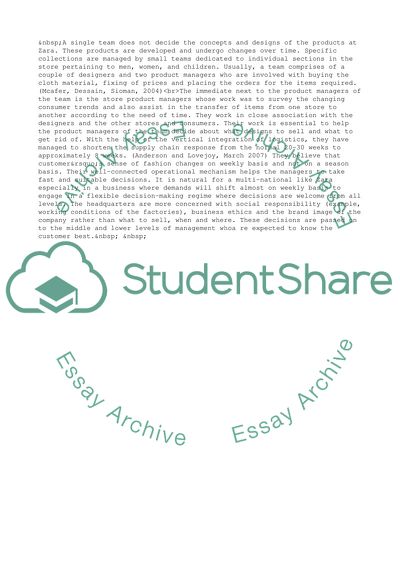Cite this document
(Management Concepts Application: Zara Term Paper, n.d.)
Management Concepts Application: Zara Term Paper. Retrieved from https://studentshare.org/management/1740140-1discuss-your-organizations-strengths-and-weakness2-apply-concepts-from-a-portion-of-three-different-chapters-in-orgainization-theory-showing-how-these-concepts-areor-are-not-relevant-to-the-functioning-of-the-organization-you-have-chosen
Management Concepts Application: Zara Term Paper. Retrieved from https://studentshare.org/management/1740140-1discuss-your-organizations-strengths-and-weakness2-apply-concepts-from-a-portion-of-three-different-chapters-in-orgainization-theory-showing-how-these-concepts-areor-are-not-relevant-to-the-functioning-of-the-organization-you-have-chosen
(Management Concepts Application: Zara Term Paper)
Management Concepts Application: Zara Term Paper. https://studentshare.org/management/1740140-1discuss-your-organizations-strengths-and-weakness2-apply-concepts-from-a-portion-of-three-different-chapters-in-orgainization-theory-showing-how-these-concepts-areor-are-not-relevant-to-the-functioning-of-the-organization-you-have-chosen.
Management Concepts Application: Zara Term Paper. https://studentshare.org/management/1740140-1discuss-your-organizations-strengths-and-weakness2-apply-concepts-from-a-portion-of-three-different-chapters-in-orgainization-theory-showing-how-these-concepts-areor-are-not-relevant-to-the-functioning-of-the-organization-you-have-chosen.
“Management Concepts Application: Zara Term Paper”, n.d. https://studentshare.org/management/1740140-1discuss-your-organizations-strengths-and-weakness2-apply-concepts-from-a-portion-of-three-different-chapters-in-orgainization-theory-showing-how-these-concepts-areor-are-not-relevant-to-the-functioning-of-the-organization-you-have-chosen.


